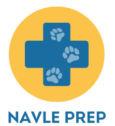Understanding the NAVLE question breakdown is your first step toward a successful exam experience.
- Exam Format Insights: Extract key information about the NAVLE’s structure and question distribution.
- Focused Study Areas: Identify the topics that carry the most weight and require your attention.
- Test-Taking Strategies: Learn how applying certain strategies can improve your NAVLE performance.
Master the NAVLE question breakdown to target your studies effectively.
Introduction to the NAVLE
The North American Veterinary Licensing Examination (NAVLE) is the definitive gauntlet that future veterinarians must traverse to demonstrate proficiency in veterinary science. It ensures you’re equipped with the knowledge and skills mandatory to embark on a successful veterinary career in the United States and Canada. Administered by the International Council for Veterinary Assessment (ICVA), this examination is a rigorous assessment of your clinical competencies across a multitude of species and organ systems.
Understanding the structure and content of the NAVLE is vital. Its role goes beyond a mere academic hurdle; it serves as a gateway to your dream profession. Therefore, diving into the intricate details of the NAVLE question breakdown is not just a formality—it’s a step toward turning your years of hard work and study into a license to heal.
Understanding the NAVLE Format
When preparing for any examination, knowledge of its blueprint is as essential as the study material itself. Let’s dissect the NAVLE format to ensure you know what to expect:
What’s the layout?
The NAVLE is a juggernaut of an exam with a total of 360 questions, of which 60 are pilot questions and do not count toward your score. These questions are cleverly interwoven throughout the exam so that you treat every question with equal importance. They serve a quality control function, assessing the potential of new questions for future exams.
What question types will you face?
Primarily, the NAVLE employs multiple-choice questions, including some that are image-based or accompanied by clinical scenarios, ensuring that your mastery of veterinary medicine is both broad and deep. This computer-based format requires not only your academic prowess but also test-taking strategies that maximize efficiency and accuracy.
Navigating through the NAVLE smoothly requires familiarity with the layout, crucial for your confidence and time management. The allotted time is broken down into sections, allowing you to gauge the pace at which you need to proceed.
Subject Matter Breakdown
Tackling the NAVLE question breakdown appropriately calls for an appreciation of the extensive subject matter. Here lies the core of your test—what you actually need to know.
Major Content Areas
Your journey through veterinary medicine has been rich and varied, covering swathes of biological terrain. On the NAVLE, you’ll find these core areas represented:
- Animal species: Questions are spread across various species, including but not limited to small animals, equines, bovines, and exotics.
- Body systems: A thorough understanding of all the major organ systems is essential, from the intricacies of the cardiovascular system to the nuances of neurology.
- Disease processes: Your ability to diagnose and understand the progression of diseases in different species will be put to the test.
Weightage of Content Areas
Not every content area wears the same crown of importance. The NAVLE scrutinizes prospective veterinarians on the most crucial elements of their profession. Expect the distribution of questions to reflect the frequency and significance of conditions you’ll encounter in practice.
Grasping the NAVLE’s layout and the weight of each subject is paramount; it informs your study priorities and sharpens your focus on areas that could be more heavily represented on the exam.
Question Types and Examples
Knowing the approximate number of questions per section is useful, but understanding the variety of question types can be a game-changer. Let’s delve into the kinds you may encounter:
Multiple-Choice Questions (MCQs)
You’ll primarily see traditional MCQs. Each will challenge your ability to recall information, apply knowledge, and assess critical clinical conditions. They may look something like this:
- Sample Question: A 7-year-old Labrador Retriever presents with lameness and swelling in the right hind leg. Radiographs show a lytic lesion on the proximal tibia. What is the most likely diagnosis?
Visually-Aided Questions
Some questions will be accompanied by images such as radiographs, cytology slides, or photographs of clinical signs. Here’s an example:
- Sample Question: Examine the image of the ear cytology. Which organism is most consistent with this presentation?
Extended Matching Questions
Occasionally, you might be presented with a list of potential answers and several questions requiring you to match the correct response based on the clinical case provided. It’s a twisted kin of the MCQ family that examines your depth of understanding across a broad spectrum with more complexity.
Through these diverse question types, the NAVLE gauges your readiness to enter the professional world. Whether it’s choosing the right treatment plan, recognizing a radiographic abnormality, or identifying a pathogen under the microscope, the questions are designed to mirror the decisions you’ll make in clinical practice.
Familiarizing yourself with examples from sample NAVLE questions can serve as an excellent way to understand the depth and breadth of content covered, while also getting used to the format and style of questioning you will encounter on the actual exam.
Arming yourself with in-depth knowledge of the NAVLE question breakdown is not only about tackling a test but also about ensuring that your transition from student to veterinarian is as smooth and successful as possible.
NAVLE Score Distribution
Understanding the NAVLE score distribution can be as critical as mastering the content. Not all questions are created equal, and your final score reflects both your knowledge and your test-taking skill.
How Is Your NAVLE Performance Measured?
- Score Range: Your NAVLE score can range from 200 to 800, with 425 being the cutoff for passing. Reflecting your level of veterinary knowledge, this score might initially seem like an enigmatic number. However, it is a meticulous composite of your correct answers, weighted by the varying importance of each question.
- Sub-Scores and Diagnostics: More than just single metrics, the NAVLE score report unfurls into sub-scores for each major content area, allowing you to see where your strengths and weaknesses lie. Consider these as directional signs guiding you towards the topics that need your attention for future improvement.
What Does Passing Look Like?
Passing the NAVLE signifies to regulatory boards that you are competent to begin practicing veterinary medicine. The current passing score of 425 was strategically established as the benchmark to separate the qualified from the unqualified candidates. It’s essential to remember that the passing standard is reviewed periodically, ensuring it aligns with the ever-evolving competencies expected of new veterinarians.
The distribution of NAVLE scores does shift year after year, reflecting changes in the pool of candidates as well as adjustments to the exam itself. This underscores the importance of staying current on the NAVLE FAQs to grasp the latest on the exam’s format and scoring.
Preparing for Different Question Formats
Preparing for the NAVLE means more than just studying content; it also involves strategizing for the types of questions you will encounter. Your preparation should be as multifaceted as the examination itself.
Tailor Your Study Technique
- Mastering the MCQs: The bulk of your preparation will likely focus on multiple-choice questions. Practice with a wide range of MCQs to bolster your confidence and speed, paying close attention to those that integrate clinical scenarios or visual aids.
- Diving into Diagnostics: For visually-aided questions, invest time in interpreting images. Familiarize yourself with a variety of diagnostic tools—from radiographs to histology slides—and learn to glean information quickly and accurately.
- Handling Extended Matching: Extended matching questions test your ability to apply knowledge in a broader context. To excel in this area, practice grouping diseases, conditions, and treatments by common features or categories.
Each question type measures different aspects of your veterinary acumen. By adapting your study strategies to cater to each type, you’ll be well-rounded and ready for any curveball the exam might throw.
Tips and Strategies for Success
As you edge closer to the NAVLE, equip yourself with proven strategies to navigate the exam confidently. Preparation is the key to performance, and these strategies can help you turn your hard-earned knowledge into a passing score.
Approach With a Plan
- Time Management: With 360 questions to answer, time is a finite and precious resource. Develop a pacing strategy. For example, if you find yourself stumped, it may be wise to move on and revisit more challenging questions if time allows.
- Pitfall Avoidance: Common pitfalls include overthinking questions or changing answers without just cause. Trust in your first instinct unless you have a compelling reason to reconsider an answer.
Cultivating the Right Mindset
- Stay Positive: Maintain a positive mindset. Your attitude can influence your test performance. Believe in your preparation and stay composed throughout the exam.
- Rest and Nutrition: Don’t underestimate the impact of a good night’s sleep and proper nutrition. Your brain functions best when it’s well-rested and fueled.
Practice, Practice, Practice
- Using Practice Exams: Leverage practice exams as a litmus test for your readiness. These simulate the real experience, helping you to identify areas to focus on before the actual NAVLE.
- Reviewing Rationale: Don’t just practice questions, understand why an answer is correct or incorrect. This will help you grasp the underlying principles that you can apply to any question.
For more expert-backed advice and techniques, explore comprehensive tips and advice found on the ICVA website.
Resources for NAVLE Practice Questions
A plethora of resources exists to help you conquer the NAVLE question breakdown.
Expand Your Question Bank
- Official NAVLE Prep: Begin with the practice exams provided by the International Council for Veterinary Assessment. This is as close to the real deal as you can get.
- Study Guides and Flashcards: Study guides such as the “NAVLE Secrets Study Guide” and online veterinary resources provide a wealth of practice questions and flashcards for review.
Leverage Online Platforms
- Online Review Courses: Platforms like Zuku Review offer a structured approach to NAVLE preparation, with the bonus of an online community to support your study journey.
- University Resources: Leading veterinary programs also offer access to resources for their students preparing for the NAVLE. For instance, Ohio State University’s College of Veterinary Medicine creates a curated NAVLE study guide.
By harnessing a range of resources that suit your study style, you’ll prepare more effectively and be able to track your progress as you improve.
Conclusion: Optimizing Your Study Approach
Integrating an understanding of the NAVLE question breakdown into your study regimen will arm you with a finely tuned strategy for success. It’s more than comprehending the content; it’s about mastering the exam itself.
By leveraging your knowledge of question formats and score distribution, tailoring your study approach accordingly, and utilizing the wealth of resources at your disposal, you’ll be in a strong position to hurdle the NAVLE barrier.
Remember to manage your time, focus on the heaviest weighted content areas, and above all, maintain a positive and determined attitude. With the right strategies, a deep understanding of the NAVLE question breakdown, and a robust study plan, you’ll be well on your way to becoming a licensed veterinarian.
NAVLE question breakdown: essential guidance on exam format, subjects, scores, and strategies to pass the veterinary licensing exam.

